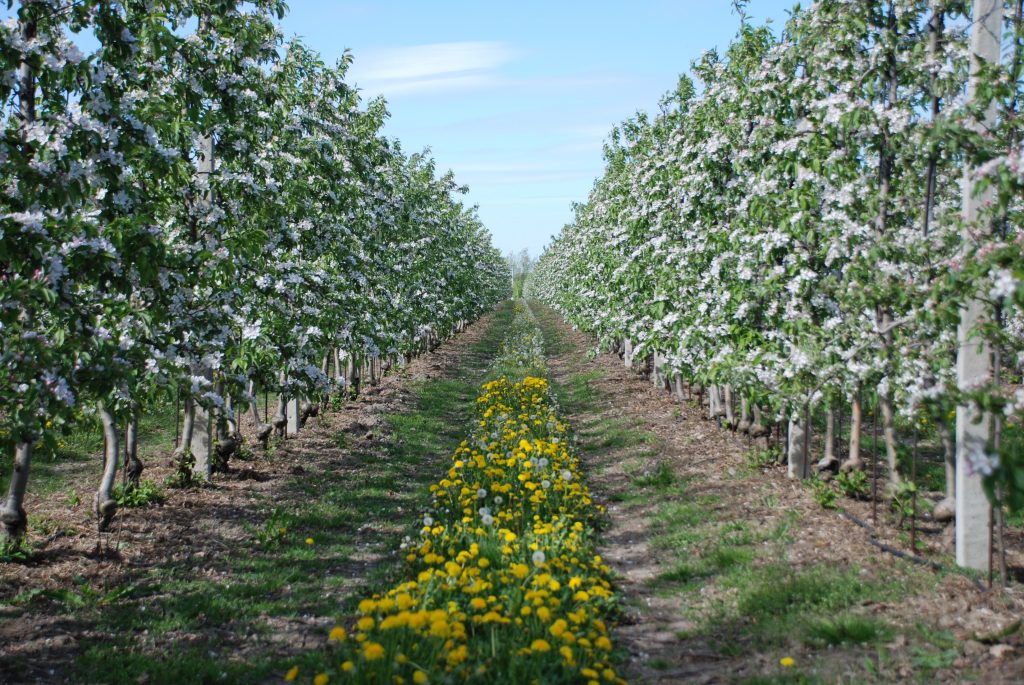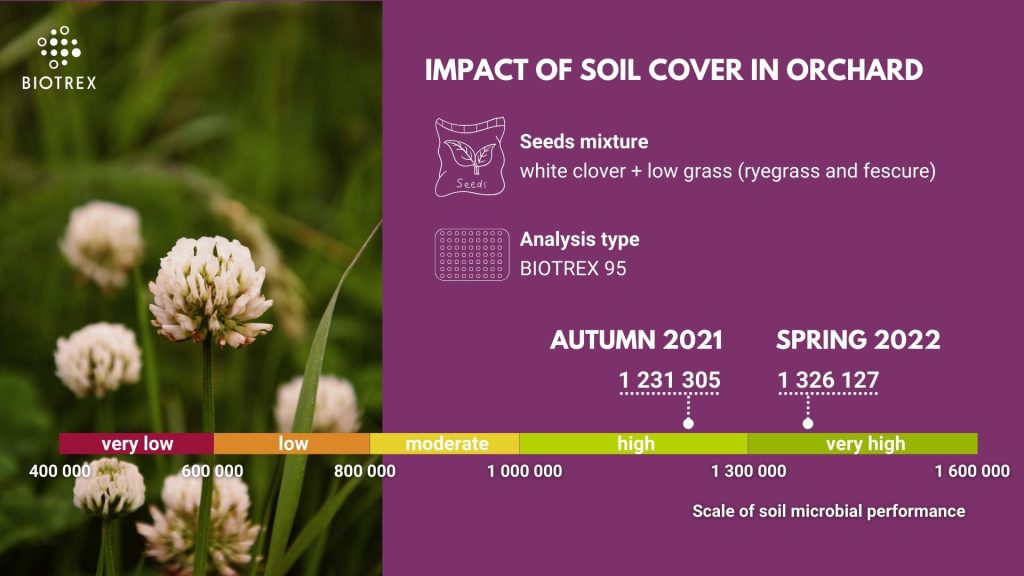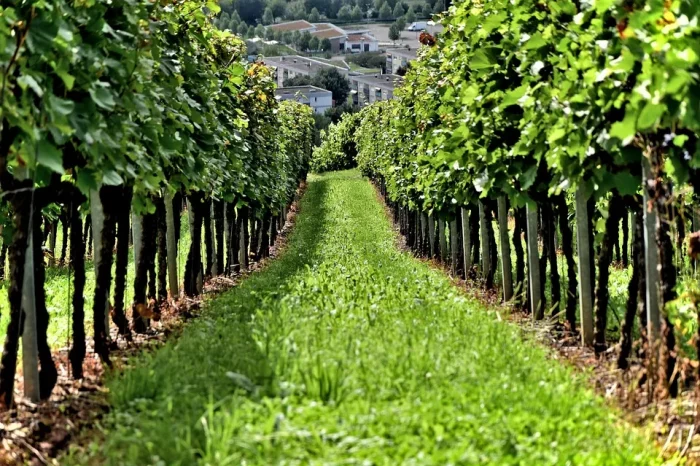Soil management in orchards is a whole different game compared to field crops and presents some unique challenges. Growing the same crop in the same place for a long time can use up some of the nutrients in the soil. This means that soil can get out of balance easily, which can lead to reduced fertility and poor functioning.
In many orchards, the soil is left bare between the tree rows, especially in conventional farming. Without vegetation cover or organic mulch to protect the soil surface, orchard soils are more susceptible to erosion by wind and rainfall. In addition, lack of soil cover can limit habitat and food sources for soil organisms, further impacting activity and diversity of soil microbes.
Addressing these issues often requires the introduction of practices that focus on soil health and fertility. One of the most important things that can be done is to minimise soil disturbance and keep the soil under cover. In line with these principles, the AGROEKOTON Association has launched a project to create soil cover in several long-established apple orchards in the Masovian region of Poland.
The AGROEKOTON Association supports and promotes environmentally friendly innovations in agriculture. Mirosław Korzeniowski, a member of the association’s board, told us that the initial aim was to create flower strips that would attract pollinators and natural enemies of pests. “For the first two years we experimented with different seed mixtures with varied results”, he admits, “until we found one that offered the most benefits, while not flowering concurrently with the apple trees.”

Mr Korzeniowski notes that the practice requires a lot of effort from the grower initially, but the benefits far outweigh the costs. More abundant pollinators, prevention of soil erosion and decrease in weed growth are all effects that can be seen with the naked eye. But the positive changes can go much further. “We wanted to see how deep the impact on the soil ecosystem was,” he says, “so we decided to analyse the soil with BIOTREX.
In the orchard tested, a mixture of white clover and low grasses such as ryegrass and fescue was used as the soil cover. As white clover does not flower at the same time as apple trees, this mixture was well suited to the orchard. The first measurement in autumn 2021 showed a BIOTREX score of 1,231,305. This result already demonstrated a positive effect of cover crops on the soil microbiome, indicating very high microbial activity and diversity. A follow-up measurement in spring 2022, one year after the cover crop was implemented, showed even more impressive microbial performance with a score of 1,326,127.

At BIOTREX, we did not find this surprising, as the mutual relationship of plants and soil microbes is very beneficial for the whole ecosystem. Plant roots excrete various substances, which encourage microbial growth, while microbes provide nutritional and disease protection services to plants. Any cover crops are expected to prevent soil erosion, improve the soil structure, and promote water retention, which are all factors beneficial to soil life.
BIOTREX and the Agroekoton Association share a deep appreciation for the vital role soil plays in agriculture. We asked Mr. Korzeniowski whether BIOTREX analysis has met his expectations. “BIOTREX has been a useful tool for us, helping us to confirm the benefits of various methods for the soil and to explain these benefits to people”, he replied.

